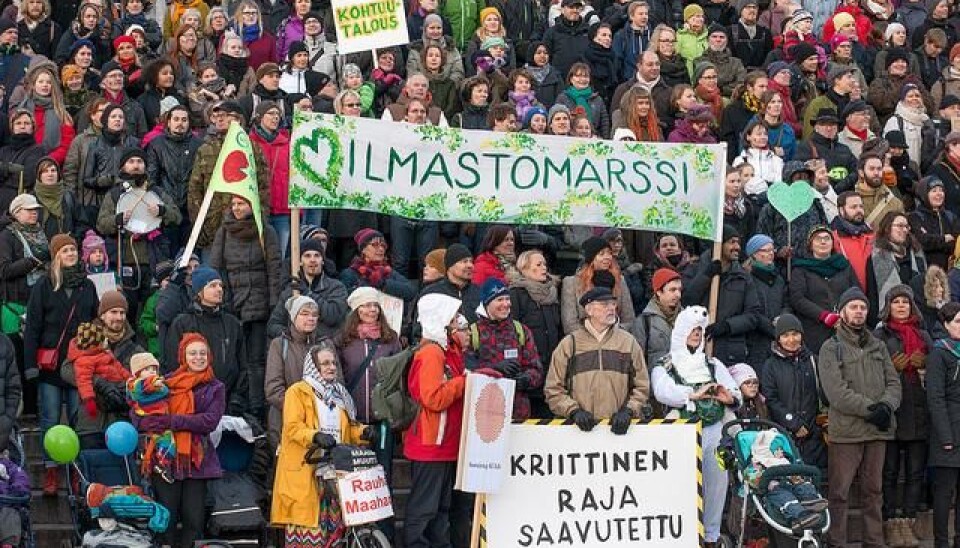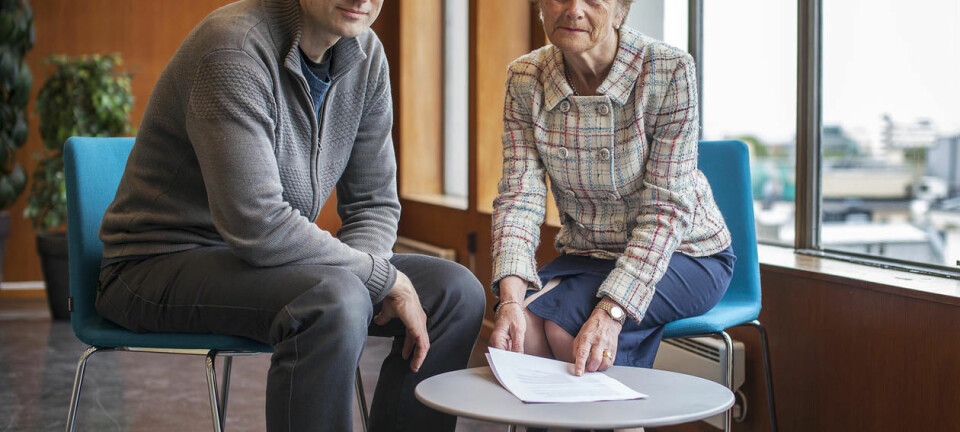
COP21: Are we ready for what climate change has in store?
Whatever happens after the COP21 meeting in Paris, climate will change. So how ready are we for what the future has in store?
At the COP21 meeting in Paris, world leaders are battling it out, balancing national interests with a goal to reach a deal that will limit global temperature rise to two degrees Celsius.
Pledges currently on the table are predicted to fall short of this target, and limit warming at around three degrees Celsius. If no deal is reached then we are on track for four to five degrees warming by the end of this century.
But these mitigation pledges are only a part of the larger story, that is, no matter if the world warms by two or four degrees, it still represents a change in climate.
Once the meeting is over, when the politicians and scientists have gone home, and the attention of the world’s media shifts its gaze, one question remains unanswered:
How and when can we adapt to the climate of the future, whatever that may be?
In the second of two COP21 themed articles on ScienceNordic, we consider whether the Nordic region is prepared to get warmer and wetter. We ask, what are the biggest challenges--and are we ready to face them?
Food: Global food system vulnerable to big changes
We begin with the food supply. According to Kimberly Nicholas, who studies global food security and climate change at Lund University, Sweden, it is a long accepted fact that basic food production is threatened by climate change.
Despite this, little has been done to secure the food systems, which the whole world depends on. They are still left massively exposed to the challenges posed by global warming.
“We now have 7.3 billion people on the planet who need to eat, but we rely on just four crops to feed almost everyone: wheat, rice, soy and corn,” says Nicholas.
Together, these four crops comprise three quarters of our calorie consumption.
“So we’re pretty vulnerable to changing growing conditions of any of these staple crops,” says Nicholas.
Just how vulnerable is highlighted by one of Nicholas’s own recent studies, which shows that corn production in the US and wheat production in Australia was heavily affected by changes in temperature.
“In Australia, where climate is already hot and dry, we saw a 50 to 70 per cent loss in wheat yields, depending on whether we reduce greenhouse gas emissions in line with the new climate pledges from Paris (under three degrees Celsius of warming), or continue business as usual emissions, which would result in a lot of warming--four to five degrees Celsius,” she says.
Economy: Nordics vulnerable to impacts elsewhere
In temperate and cooler regions of the world like the Nordics, agriculture could stand to benefit from a longer growing season and warmer temperatures.
But Nicholas describes the overall global situation as negative:
“Studies show that for every one degree warming we see up to a ten per cent decrease in crop yields for the four staple crops. So globally the effect is negative.”
This is echoed by Adriaan Perrels, who studies the economic impacts of climate change at the Finnish Meteorological Institute. For him domestic markets may be at risk of events elsewhere in the world.
“Do we really understand what happens in one place, if other areas become uninhabitable?” says Perrels.
For example, he says, mass migration of people due to desertification and drought in the Middle East. What about the effect on local fish stocks if the sea around us becomes too warm?
“Consumer choices will have to change,” says Perrels.
The impacts extend far beyond issues of food security:
“The economies of Nordic countries are hugely dependent on trade through harbours in Rotterdam or Hamburg for example, which are very floodable cities. They are preparing themselves for climate change, but if either one of these cities were out of service due to flooding, it will have far reaching economic impacts,” he says.
Floods: Cities and infrastructure under threat
The Nordic region can however, boast of progressive adaptation plans when it comes to planning for the localised impacts of climate change.
From mapping flood risk from heavy rain and rising seas in Denmark, Sweden, and southern Finland, to understanding Norway’s vulnerability to a shorter snow season and landslides.
In Denmark, a nationwide effort by local municipalities means that each local area has developed its own vulnerability assessment, and adaptation plan to cope with a warmer, wetter future, say Engineer Kristian Vestergaard, from Aarhus University, Denmark.
“In 2011 there was a major flood in Copenhagen. We had lots of rain in a short time, and the floods that followed cost one billion euros in damages,” says Vestergaard.
These types of intense rain events are predicted to occur more frequently in the coming decades in Scandinavia, and it was this costly experience that kick-started Denmark’s nationwide program to cope with future flooding.
Many of the schemes represent a back-to-basics approach: making room for floodwaters above ground in parklands or grassy areas surrounding existing waterways, rather than redesigning sewer systems to accommodate floodwater.
“We created a lot of these problems ourselves by focussing storm water underground into pipes and overloading the system. So now we’re reinventing our approach to cope with these future scenarios,” says Vestergaard.
Some of the anti-flooding systems are in place but remain untested.
Health: Gradual and predictable changes that we can plan for
Planning for such dramatic events like flash flooding is only part of the larger picture, says Dr Hans Sanderson, who is an environmental chemist at Aarhus University and leader of the large European climate change adaptation project, BASE, which addresses adaptation strategies in various sectors, such as agriculture, flood defences, and health.
“These events draw a lot of the attention, but they are often random in nature, which means that they are very difficult to precisely predict and plan for,” he says.
What we can plan for, says Sanderson, are the gradual changes we will see in the new types of diseases and illness that will follow rising temperatures.
“We could expect to see increasingly resistant diseases coming to Scandinavia, and a greater risk of vector borne diseases like malaria and lime disease, and so on,” says Sanderson.
“We know the trends, and we can prepare doctors and hospitals for now, so why are we not, to a greater degree, discussing how and when to do this?” says Sanderson.
The Future: technology and society will not stand still
One thing is certain, agree the experts: whatever the future has in store, it is unlikely that we will be unprepared.
“We’re not going to be stuck at this point technology wise, imagination wise, or culturally. We will develop. We won’t stand still or run blindly off the cliff,” says Sanderson.
Still, he has concerns for less wealthy countries and regions of the world, who he describes as being already up against climate change.
Nicholas keeps the message simple: mitigate first and adapt as needed, which brings us back to the outcome of the COP21.
“With a limited amount of warming, say the two-degree target, the impacts are certainly less severe and more manageable. So it really is a choice that we have to make now,” says Nicholas.









